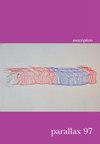A World Under Water: Rethinking the Levee in Beasts of the Southern Wild
IF 0.1
4区 社会学
Q4 CULTURAL STUDIES
引用次数: 1
Abstract
During the opening sequence of Benh Zeitlin’s apocalyptic tale Beasts of the Southern Wild, the six-year-old protagonist Hushpuppy and her father Wink are drifting on a provisional boat made up of discarded spares as they stare at a giant levee that separates their home, the Bathtub, from ‘the dry world’ on the other side. Dwarfed by the enormous wall, Hushpuppy and Wink contemplate the industrial landscape beyond the divide as they float across the waters blocked by the construction. While the image clearly positions Hushpuppy and Wink on the side of the excluded, abandoned and precarious, opposite modernity’s marvel, Wink confidently declares ‘Ain’t it ugly over there? We’ve got the prettiest place on earth’, before Hushpuppy’s voice-over elaborates that ‘up above the levee, on the dry side, they are afraid of the water like a bunch of babies. They built the wall that cuts us off’. From the outset, the film offers a stark reminder that climate precarity takes place within the context of colonial and capitalist division, where the end of the/ one world is premised on the growth of another. The levee dramatises the margin of Hushpuppy’s universe and simultaneously positions her as marginalised in a sternly hierarchised order. ‘A site of dispossession’, as Katherine McKittrick would put it, the levee as border, edge and limit is simultaneously spatial, imaginary and socially produced, relegating precarity to the invisible, nonhuman and adjacent. In centring the child’s perspective, however, the film renegotiates the physical and phantasmatic expulsions achieved by fences and walls, viscerally remapping (if messily) the unimagined spaces of climate dispossession.水下世界:重新思考南方野兽的堤坝
在Benh Zeitlin的世界末日故事《南方野兽》的开场白中,六岁的主人公Hushpuppy和她的父亲Wink在一艘由废弃备件组成的临时船上漂流,他们凝视着一条巨大的堤坝,这条堤坝将他们的家Bathtub与另一边的“干燥世界”隔开。Hushpuppy和Wink被巨大的墙矮化了,他们漂浮在被建筑阻挡的水域中,凝视着分水岭之外的工业景观。虽然这张照片清楚地将Hushpupy和Wink定位在被排斥、被抛弃和不稳定的一边,与现代性的奇迹相反,但Wink自信地宣称:“那里不是很丑陋吗?”?“我们有世界上最漂亮的地方”,然后Hushpuppy的画外音阐述道,“在堤坝上方,在干燥的一侧,他们像一群婴儿一样害怕水。”。他们建了一堵墙把我们隔开。从一开始,这部电影就清楚地提醒我们,气候的不稳定发生在殖民地和资本主义分裂的背景下,一个世界的终结以另一个世界发展为前提。堤坝戏剧性地展现了Hushpuppy宇宙的边缘,同时也将她定位为一个严格的等级秩序中的边缘化者。”正如凯瑟琳·麦基特里克(Katherine McKittrick)所说,“一个被剥夺的地方”,作为边界、边缘和极限的堤坝同时是空间的、想象的和社会产生的,将不稳定降级为无形的、非人类的和相邻的。然而,在以孩子的视角为中心的过程中,这部电影重新谈判了围栏和墙壁所实现的物理和幻想驱逐,发自内心地重新映射了(如果混乱的话)无法想象的气候剥夺空间。
本文章由计算机程序翻译,如有差异,请以英文原文为准。
求助全文
约1分钟内获得全文
求助全文
来源期刊

Parallax
Multiple-
CiteScore
0.50
自引率
0.00%
发文量
0
期刊介绍:
Founded in 1995, parallax has established an international reputation for bringing together outstanding new work in cultural studies, critical theory and philosophy. parallax publishes themed issues that aim to provoke exploratory, interdisciplinary thinking and response. Each issue of parallax provides a forum for a wide spectrum of perspectives on a topical question or concern. parallax will be of interest to those working in cultural studies, critical theory, cultural history, philosophy, gender studies, queer theory, post-colonial theory, English and comparative literature, aesthetics, art history and visual cultures.
 求助内容:
求助内容: 应助结果提醒方式:
应助结果提醒方式:


